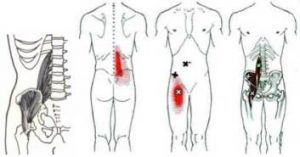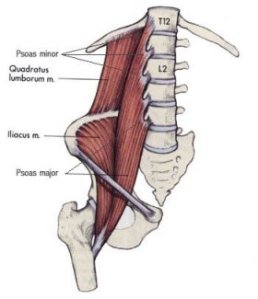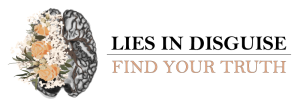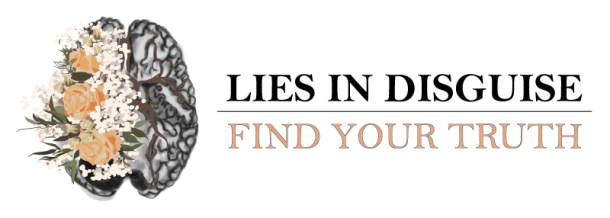For many years I suffered with chronic back pain. Often when I would go for a massage with my RMT (Registered Massage Therapist), she would say “do you have other things going on in your life? – because this is not just work related.”
I sloughed it off, thinking stress is just a part of life and I may be a little more tense than the next person, it’s no big deal.
Working as an Aesthetician for many years with poor poster and ergonomics, I assumed that was the main culprit responsible for my agony. Sure, It contributed, but there was something much deeper and more fundamental involved.
It took many years of failed attempts to control the muscle spasms, chronic tension, pain, heart burn, and sleepless nights. At one point, the pain was so bad on the right side of my lower back, travelling down my hip, through the SI joint (Sacroiliac Joint), groin, buttocks, and leg, that I was unable to walk, and had to be assisted to the hospital.
The Doctor concluded I had “Piriformis Syndrome”. This occurs when the piriformis muscle (which runs along the Sciatic nerve), becomes inflamed and irritated, compressing this nerve, and causing Sciatica.
The doctor injected an anti-inflammatory into that muscle and sent me home with prescription pain medications. My life became consumed with a dependence on pain medications and I suffered all types of side effects from them. In the end , the pain was still there.
I finally came across a male Sports Massage Therapist who listened to my concerns. He began working on my front, instead of my back. This seemed unusual. He placed pressure on my belly, next to my belly button, working up under my ribs and then down and into my groin. The pain was unbearable, and my hands began to sweat.
He concluded that I had many muscles inflamed and irritated, not the piriformis singularly. He stated “this is just a symptom”, and concluded the main muscle causing the problem was my Psoas muscle, (pronounced so-as). But why?


Thereafter, I began researching, and discovered the connection between emotional trauma, fear, toxic stress and anxiety, and it’s connectedness to a tight Psoas muscle.
The term psychosomatic illness, or disorder, is a physical illness/disease, that is caused, or made worse by, mental factors such as stress and anxiety.
There is a strong connection between our Psoas muscle and anxiety. The Psoas muscle is not only our core-stabilizing muscle, but is a muscle which is thought to be critical to our emotional wellbeing and connectivity to the present moment.
This muscle is part of our survival mechanisms and triggered by the flight or fight response of our nervous system. A chronically stressed and anxious person develops a chronically activated flight/fight/freeze response, and this in turn, means a constantly tightened Psoas/core muscle.
Often times, the Psoas muscle is referred to as “the muscle of the soul” and the source of our anxiety and fear. It is where most of our stress and trauma is stored. Because the psoas involves such basic physical and emotional reactions, a chronically tightened psoas will continually signal to your brain that you’re in danger. This, in turn,will exhaust the adrenal glands and deplete the immune system, causing a host of other psychosomatic illnesses.
A healthy psoas muscle comes from the releasing of unnecessary tension. A mind and body connection is crucial. Another term for connecting the physical body symptoms to the mind, is called bio-feed back. Listening to what your pain and your body is trying to tell you. Recognize the physical symptoms AND the psychological symptoms at the same time, and how they are interchangeable, instead of having a disconnect.
This means having a strong sense of self awareness. Of being aware of our thoughts, triggers, fears, anxieties, and unresolved-stored trauma in the body. Resolving trauma can release stored memory held deep within the psoas. There are many therapeutic ways, both physically and psychologically, to accomplish this.
What other psychosomatic illnesses are there?
It is now recognized that emotional factors play a role in the development of nearly ALL organic illnesses and their physical symptoms. These can include, but are not limited to, lower back pain, migraine headaches, irritable bowel syndrome, insomnia, susceptibility to infection and the inability to recover (compromised immune system), arthritis, ulcers, asthma , allergies, and endocrine disorders.
Just like with my experience, there was much more than met the eye. It became like a wild goose chase in discovering the truth behind all my pain and physical symptoms. It took time both to discover them and make it a daily practice to consciously release the tension and trauma, but was achieved through counselling, mindfulness exercises, stretches, breathing, massage and other outlets. The key is finding what works for you.
My symptoms were disguising themselves under a much deeper truth. A truth I had first had to be ready to find and resolve. Ask yourself:
Are your illnesses/painful symptoms what you think they are?
Are they another lie in disguise?
Is there a truth deep within you that has yet been discovered, uprooted and transformed?
It is possible to take that pain and turn it into something beautiful?
Warm regards,
Oriana
xo
Keep healing, keep growing, keep finding your truth.

Sources:
Psychosomatic. (n.d.). Retrieved August 08, 2017, from http://medical-dictionary.thefreedictionary.com/psychosomatic
Koch, L. (2012). The psoas book. Felton, CA.: Guinea Pig Publications.
Image: Freepik.com








Recent Comments